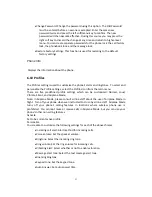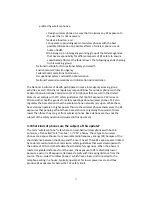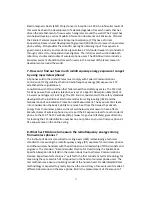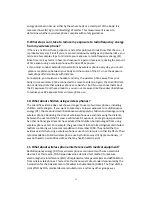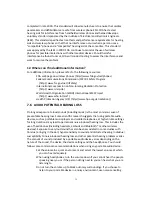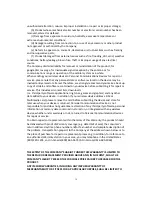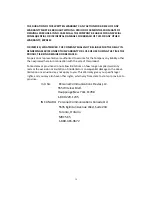
35
completed
in
late
2000.
This
standard
will
allow
manufacturers
to
ensure
that
cardiac
pacemakers
and
defibrillators
are
safe
from
wireless
phone
EMI.
FDA
has
tested
hearing
aids
for
interference
from
handheld
wireless
phones
and
helped
develop
a
voluntary
standard
sponsored
by
the
Institute
of
Electrical
and
Electronic
Engineers
(IEEE).
This
standard
specifies
test
methods
and
performance
requirements
for
hearing
aids
and
wireless
phones
so
that
that
no
interference
occurs
when
a
person
uses
a
“compatible”
phone
and
a
“compatible”
hearing
aid
at
the
same
time.
This
standard
was
approved
by
the
IEEE
in
2000.
FDA
continues
to
monitor
the
use
of
wireless
phones
for
possible
interactions
with
other
medical
devices.
Should
harmful
interference
be
found
to
occur,
FDA
will
conduct
testing
to
assess
the
interference
and
work
to
resolve
the
problem.
12.
Where
can
I
find
additional
information?
For
additional
information,
please
refer
to
the
following
resources:
FDA
web
page
on
wireless
phones
(http://www.fda.gov/cellphones)
Federal
Communications
Commission
(FCC)
RF
Safety
Program
(http://www.fcc.gov/oet/rfsafety)
International
Commission
on
Non
‐
Ionizing
Radiation
Protection
(http://www.icnirp.de)
World
Health
Organization
(WHO)
International
EMF
Project
(http://www.who.int/emf
)
Health
Protection
Agency
(UK)
(http://www.hpa.org.uk/radiation/)
7.6
AVOID
POTENTIAL
HEARING
LOSS
Prolonged
exposure
to
loud
sounds
(including
music)
is
the
most
common
cause
of
preventable
hearing
loss.
Some
scientific
research
suggests
that
using
portable
audio
devices,
such
as
portable
music
players
and
cellular
telephones,
at
high
volume
settings
for
long
durations
may
lead
to
permanent
noise
‐
induced
hearing
loss.
This
includes
the
use
of
headphones
(including
headsets,
earbuds
and
Bluetooth®
or
other
wireless
devices).
Exposure
to
very
loud
sound
has
also
been
associated
in
some
studies
with
tinnitus
(a
ringing
in
the
ear),
hypersensitivity
to
sound
and
distorted
hearing.
Individual
susceptibility
to
noise
‐
induced
hearing
loss
and
other
potential
hearing
problems
varies.
The
amount
of
sound
produced
by
a
portable
audio
device
varies
depending
on
the
nature
of
the
sound,
the
device,
the
device
settings
and
the
headphones.
You
should
follow
some
commonsense
recommendations
when
using
any
portable
audio
device:
Set
the
volume
in
a
quiet
environment
and
select
the
lowest
volume
at
which
you
can
hear
adequately.
When
using
headphones,
turn
the
volume
down
if
you
cannot
hear
the
people
speaking
near
you
or
if
the
person
sitting
next
to
you
can
hear
what
you
are
listening
to.
Do
not
turn
the
volume
up
to
block
out
noisy
surroundings.
If
you
choose
to
listen
to
your
portable
device
in
a
noisy
environment,
use
noise
‐
cancelling



